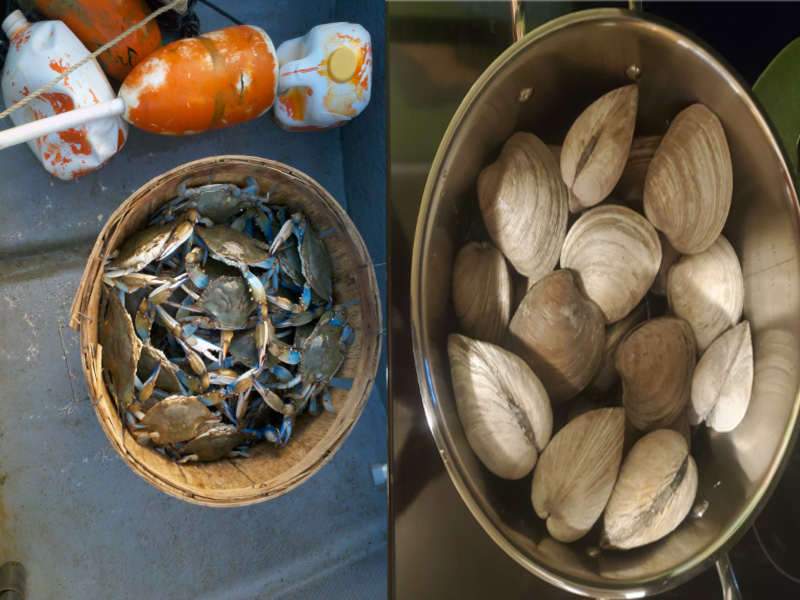Much as we all love Chesapeake Bay fishing, sometimes a change of pace is in order. Maybe your favorite fishing rod just fell overboard, perhaps the winds are too strong, or you might just feel like you need to break out of the usual mold — whatever the reason may be, sometimes we anglers feel the urge to capture critters that don’t have scales and tails. In that case…

On the Bay: Catching Crabs
Crabbing can be productive with pull traps, via running a trot line, or just plain old chicken-necking. Check out these quick tips to make sure your crabbing ventures are fruitful:
- During the middle of summer boat traffic can cause lots of wakes, which shake the crabs off your trot-line before you can get to them. Combat this by laying the line with extra slack. You’ll have less time to scoop as the crabs may not be within sight until they’re just a few feet away, but when a wake rocks your boat it won’t shake dozens of baits all at once.
- Yes, crabs will eat about anything. But if you use relatively fresh bait, you will catch more of them than you will using that old, nasty, freezer-burned stuff left over from last year.
- When chicken-necking off a pier it’s tempting to set all your lines in deep water, but try some shallow. On occasion the lines just deep enough that you can’t see the bait will catch more crabs than the ones at the end of the pier.
At the Beach: Digging Clams
Digging clams in the seaside bays is pretty darn easy, and the best part is that those clams never try to swim away nor do they fail to bite. If you don't know where to find them or how to locate clams in the bottom, however, your feast will face some serious delays. So:
- Look for clams in areas where there’s flat, sandy-mucky bottom with knee deep (low tide) to waist deep (high tide) depths. Soft sand generally isn’t as good and hard sand is tough to dig in.
- If you don’t have a clam rake and it’s high tide, carry a dip net with you. Then when you wiggle a clam out of the sand with your foot, you can lower the net and kick it in to retrieve it without ducking your head underwater.
- If you’re walking in from a public access point, bring a pair of water shoes and walk several hundred yards before you even start looking for clams. Usually, spots close to public access are picked over by midsummer and the farther you walk, the better the clamming is likely to be.
Check out the Fish and Hunt Maryland Crabs pages for more intel on crabbing, and check out the Chincoteague USFWS Fishing page for some solid intel on coastal clamming.